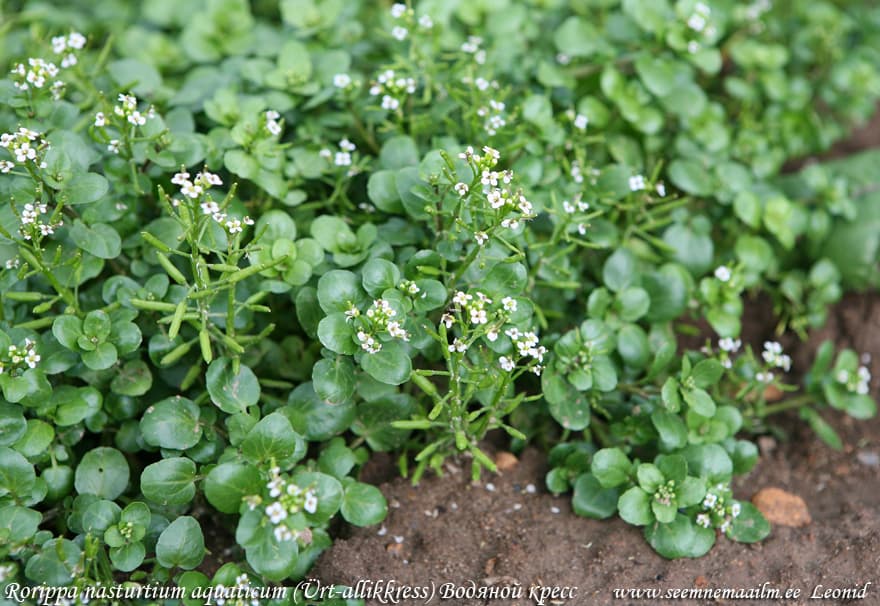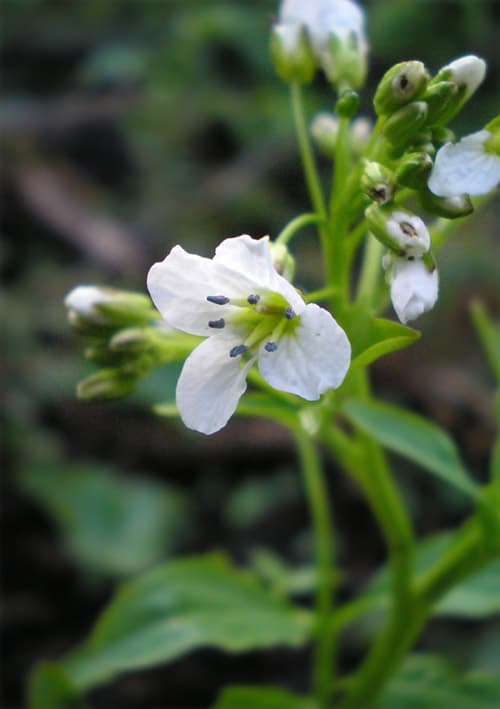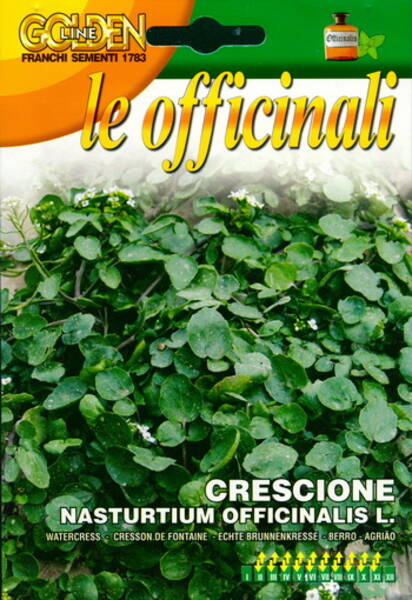Watercress (local names: rezhuha, watercress, bruncress, key watercress, water horseradish, waterworm) - Nasturtium officinale.
The medicinal plant is an early-ripening vegetable culture that contains mustard essential oil, ascorbic acid, a lot of vitamin C, carotene, and a relatively large amount of iodine.
Fresh young leaves have a pleasant spicy taste; they are used as a seasoning for salads, meat, vegetable and egg dishes.



Watercress. Bot. syn.: Nasturtium officinale, Nasturtium aquaticum Wahlenb., Rorippa nasturtium-aquaticum (L.) Hayek, Sisymbrium nasturtium-aquaticum L.
* Little was known about this plant until recently. Meanwhile, watercress is a promising crop. What does he represent?
Watercress is a perennial, fast-growing plant in the cabbage family.
It has long been cultivated as a vegetable crop in the countries of Western Europe, Asia and America, and it succeeds both in the open and protected ground.
The surface of the plant is devoid of hairy cover, and when in contact with the soil, it forms roots. The stem is erect, thick, easily rooted.
The length of the cress is 30–90 cm, the stem is creeping. The leaves are dissected. The flowers are white. The seeds are arranged in two rows in each pod. A plant with a sharp mustard flavour is used as a whole food.
Watercress is rich in vitamins and trace elements necessary for the human body, it has a favourable ratio of potassium and calcium.
The special value of watercress greens is due to the iodine content, which is usually 0.448 mg per 1 kg of dry matter.
Due to the fact that watercress is rich in minerals and vitamins and at the same time low in calories (sugars are almost absent),
it is useful in clinical nutrition for obesity and diabetes.
Watercress is grown with abundant irrigation in areas with a mild climate (in the temperate zone - under the film), as well as along the banks of streams, rivers and other flowing reservoirs at a minimum water temperature of + 10 + 12 ° C. Can also be grown indoors in hydroponics.
It propagates by seeds and cuttings. Planting is carried out with seedlings grown from seeds or cuttings.
When grown in the protected ground on hydroponics, 6–8 cuts of watercress greenery are obtained per year (2.5 kg per 1 m2 for each cut).
In the warm season, this crop can also be grown in open ground (in a shaded and humid place) with abundant watering on ridges covered with a film.
For planting, cuttings of shoots 10–20 cm long are taken. For better rooting, freshly cut cuttings are lowered into a vessel (you can use an ordinary glass), half or one third filled with water. Roots appear after 7-10 days. Plant cuttings according to the scheme 20x20 cm.
At planting and then weekly, full mineral or only nitrogen fertilizers are applied, depending on the development of the plants.
Greenery is harvested many times (in greenhouses - every 2 months, and in open ground under a film - 2 mowings during the growing season).
Cut shoots with leaves 25–30 cm long are knitted into bundles weighing 0.5 kg, placed in plastic bags and placed in baskets.
Cut the greens with scissors or a sickle. Whole greens of the plant (leaves and stems) are allowed to eat.
Delicious are sandwiches with ham, fish or cheese, covered with watercress greens. Chopped greens are added to soups or used as a side dish for second meat and fish dishes.















